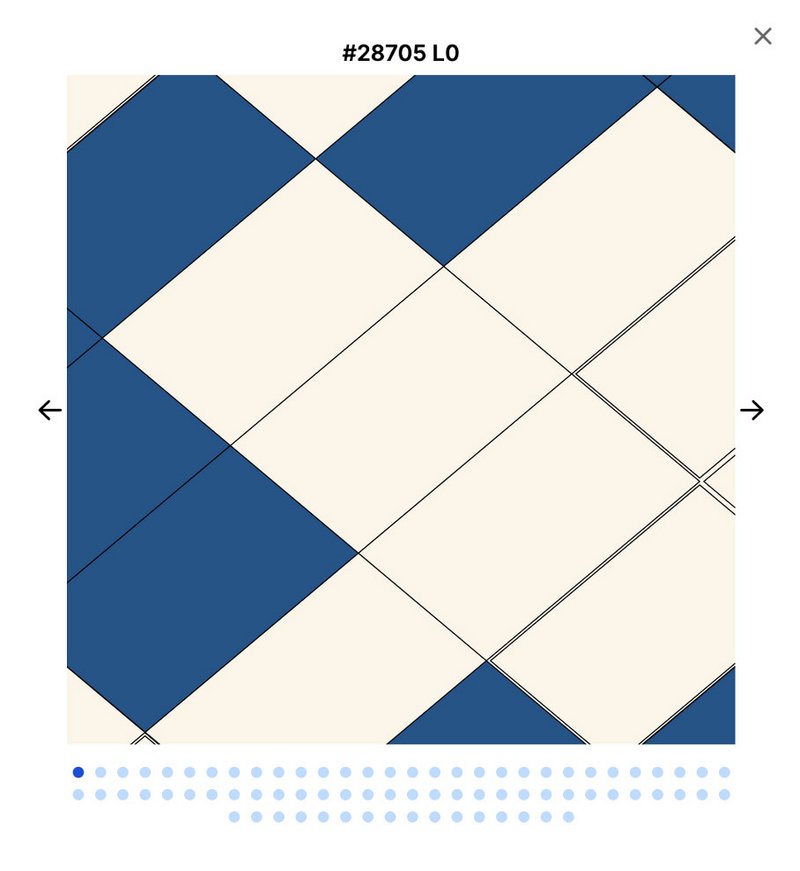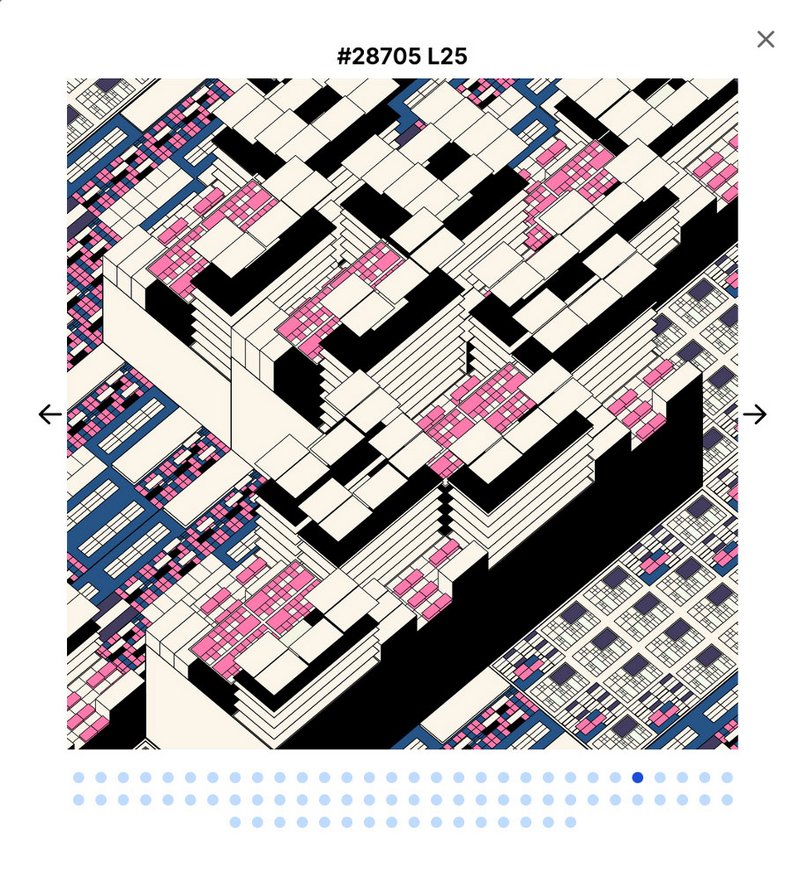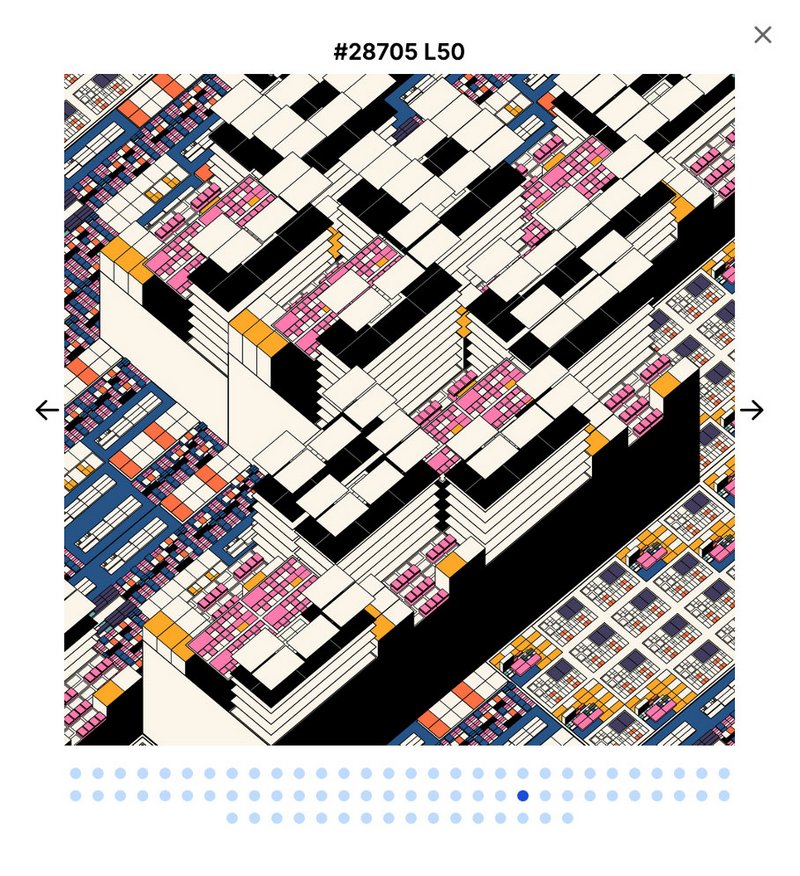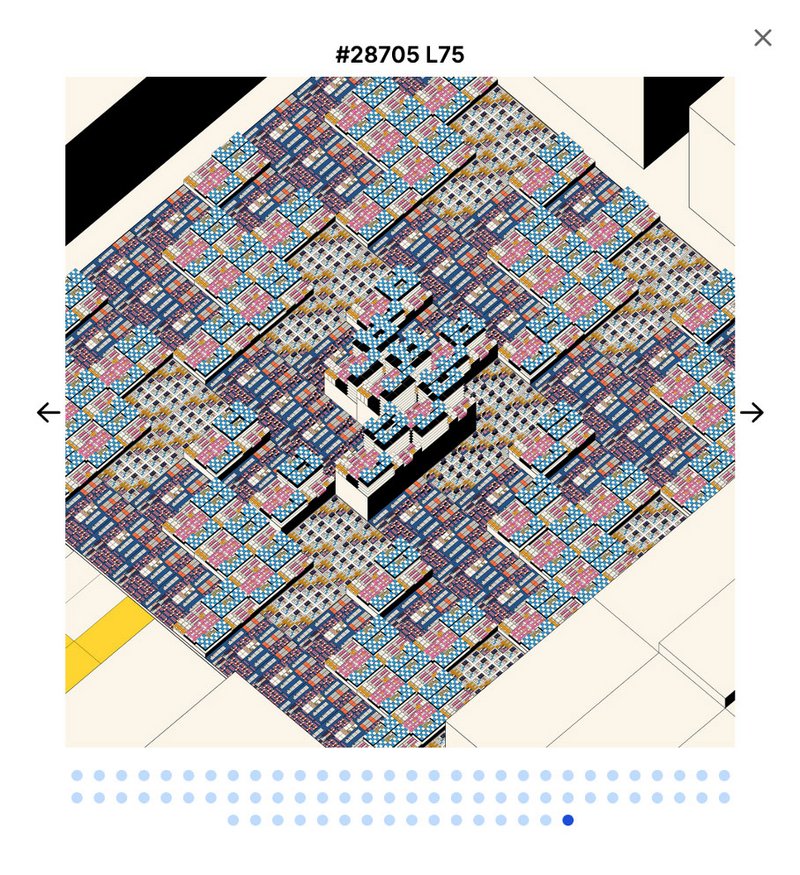Return the favor Part 5: Web3/NFT-native loyalty approaches and mechanisms
Bonus and benefit programs can be a powerful tool for building customer loyalty. Our blog series focuses on current trends and strategies in the loyalty market and where brands can best start to build a successful loyalty offering for their customers.
INFTs, or digital collectibles, enable the integration of digital goods into loyalty programs for the first time. To understand the value of this new class of benefits, it is first worth taking a look at the NFT market or web3 native projects and the role that loyalty plays in the success of projects in this area.
Date
12 Jun 2023
Topics
#Retail
#Web3
Author
Dinara Rosow & Tristan Ricken
Timing and duration of customer loyalty
NFTs enable new forms of customer engagement, both at the level of the activities that can be incentivized and at the level of the reward itself, which did not exist in the physical space. For example, NFTs make it possible for the first time to reward supporters for recognizing and supporting a project particularly early on - and remaining loyal to it over the long term. This not only rewards pure customer loyalty, but also conveys an "expert status" that is recognizable from the outside. The ability of customers to recognize a project as a potential long-term success at an early stage can now be seen. Rewarding customers for their early intuition can, in turn, encourage other customers to get involved with new projects and products at an early stage.
Artificial scarcity
Another way in which NFTs create new forms of loyalty value is through the mechanism of artificial scarcity. In the case of physical products, for example, this is an established, very efficient value-enhancement lever in the streetware sector. NFTs, by definition, enable exactly that: the scarcity of digital goods. Since there is usually only a limited number of certain NFTs on the market, a "FOMO" effect (Fear Of Missing Out) can be created, i.e., a special desirability. This increases the value of the goods on the secondary market.
Access to exclusive offers
But NFTs don't just let you regulate digital ownership: They also make it possible to easily regulate access to digital communities, events or product launches. In the past, owners of certain cars had to prove that they actually owned the vehicle and that they had purchased it at a certain point in time, but now NFTs can easily map such information and make it analyzable. This information can then be used as a prerequisite for participation in an event or sale.
To better understand the mechanisms described, it is worth taking a look at current projects from the NFT space. Many of them are designed according to the "loyalty first" principle and offer a lot of inspiration.
1. exclusive product drops for NFT holders
Yuga Labs has continuously demonstrated with its Bored Ape Yacht Club how holders of Yuga assets are rewarded for their loyalty and receive more and more assets from the ecosystem if they remain token holders and thus part of the ecosystem. Accordingly, most NFTs from the Yuga ecosystem are now trading at attractive and expensive prices. Other examples such as the MemeCards from 6529 or the Deca.art platform are further projects that show how holder:s of certain tokens are rewarded for their commitment and support. In both cases, there are regular raffles of NFTs created in collaboration with established artists. Often, holders also get exclusive access to these new drops. In both cases, the raffles are characterized by clear requirements and rules, which creates transparency and ensures a high level of perceived fairness among the participants. Automations and tools can then be used to draw winners with minimal effort or to identify wallets that meet certain requirements and thus gain access to the raffle. By designing appropriate requirements in combination with an attractive prize, the engagement of participants can be greatly increased.

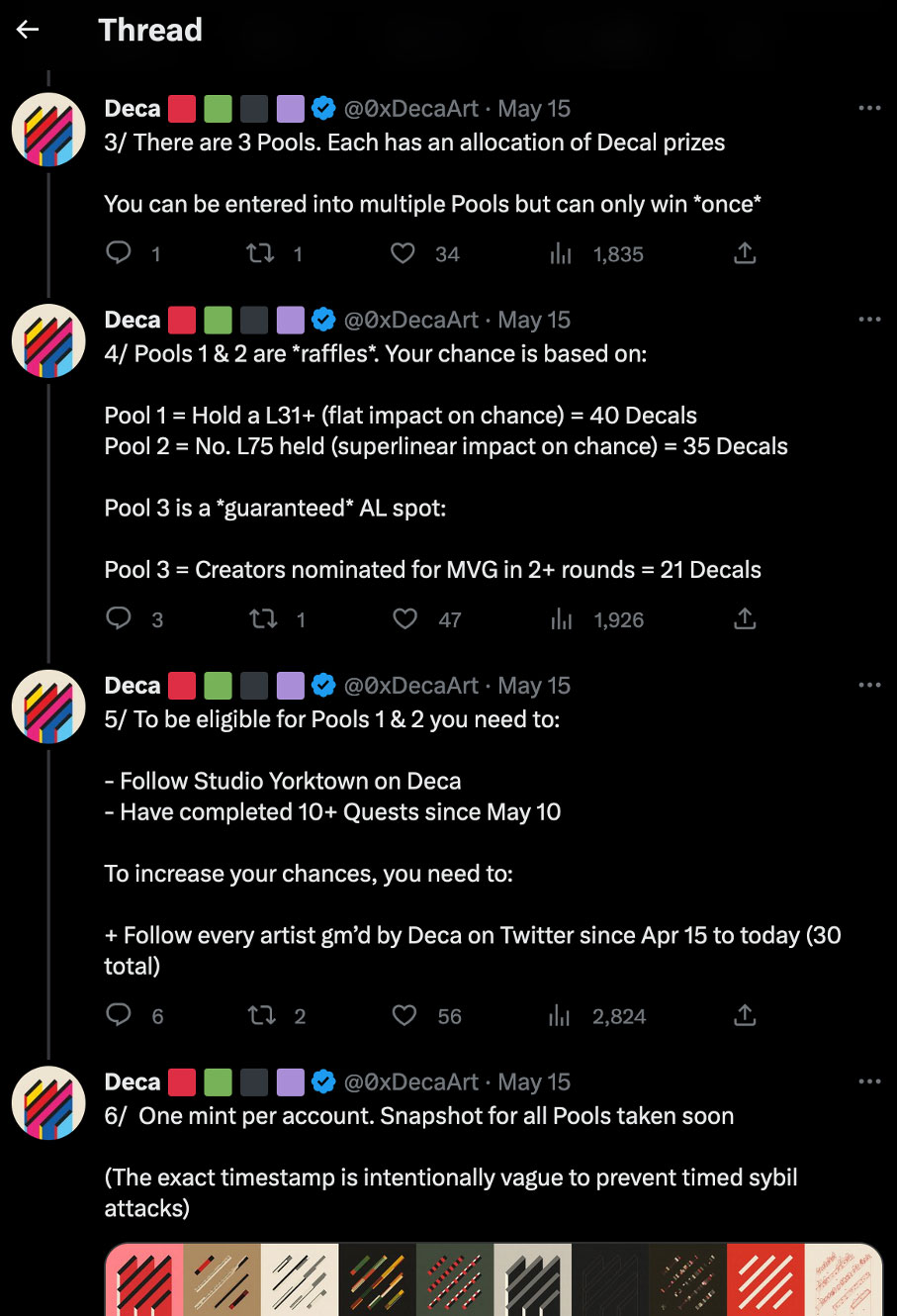
2. Early Access zu Produkt-Drops und Sales:
If you look at what is particularly important to customers in loyalty programs, exclusive or early access to products and discount promotions is a high priority. In a global market survey, more than 50 percent of participants said they wanted a loyalty program to give them early access to discount promotions and new products (The state of brand loyalty 2021, yotpo report). NFTs make both of these even easier to operationalize: it is now standard market practice to allow only certain wallet addresses during the initial sales phases of new drops. For interested parties who are not yet on the project's access list, the opportunity to participate in the primary sale of new drops thus rarely arises. This type of "token gating" is slowly spilling over into traditional e-commerce as well. For example, the Doodles project has announced that it will open a token-gated webshop. This is being done in cooperation with Shopify, which means that this type of access regulation could soon become integrable for other webshops as well.
3. access to the project community
Access to certain communities and the exchange within them can also provide a strong incentive to remain loyal to a brand or project. We are already seeing much of this on a large scale in the NFT space. Projects such as WAGMI United are also increasingly appearing in the direction of fashion and show how NFT-native elements can be used to create advantages for one's own community or to keep access to products exclusive for them. English soccer club Crawley Town has produced and given jerseys and fan accessories exclusively to token holders:inside. This model could become exciting for a variety of other brands as well. Exclusivity is playing an increasingly important role, as it meets the desire of many individuals to distinguish themselves and express an individual status. On the other hand, it is important for many people to express their affiliation with communities to the outside world. Brands have a grateful target group with such communities, as has been shown, for example, in the case of Adidas and the Bored Ape Yacht Club.
4. new opportunities for customer interaction with brands
NFTs enable new forms of engagement with the brand or project. The example of Deca.art shows how participants are encouraged to interact with the platform on a daily basis: Decagon token collectors hold a work of art by an established artist that can be continuously developed through engagement with the platform. Different activities of the user:in are rewarded with so-called DGX points. A certain number of these points is required to develop the artwork to the next level.
The engagement of users on the platform is also taken into account in prize draws for dedicated artist drops and access to these, so that users have a strong incentive to interact with the Deca platform and be part of the community. What is particularly exciting here is that users are incentivized to interact with the platform on a daily basis through a gamification approach that manifests itself in small daily quests. While engagement with customers currently works through the usual channel mix of email newsletters, social media, push notifications, and the like, in Deca's case a working gamification approach is used to incentivize users' daily engagement with the platform.
Although gamification has been a long-held hope for many loyalty programs to not only increase but also deepen customer engagement with the brand, few brands and companies have been able to implement truly meaningful integration. NFT-native projects like Deca show how it can succeed in establishing new mechanisms of engagement. Increased engagement creates a positive, emotional connection to the brand or platform, something that previous loyalty approaches have rarely achieved to this extent.
NFTs / Digital Collectibles & the Issue of Digital Goods
By integrating possessable, digital goods in the form of NFTs (or digital collectibles) into existing loyalty programs, the offer for redeeming collected points can be expanded. They enable new forms of program design and can overcome previous limitations. Coffee shop chain Starbucks has announced plans to integrate the issuance of digital goods into its benefits program. This will create new touchpoints and engagement opportunities with program participant:s. Another example is the IWC Diamond Hand Club, a Web3 club that offers exclusive access to IWC token holders. In addition, holding tokens is incentivized by unlocking additional benefits. IWC rewards the loyalty of token holders, which can increase the attractiveness of membership and thus also influences the performance of the secondary market. What is special about this is that IWC is potentially able to profit from the resale of tokens by setting percentage royalties. This offers program initiators new opportunities to earn money from such offers themselves. They have many design approaches at hand to make these offers attractive, which in turn can result in an increase in the value of the tokens.
Digital collectibles in various forms, from POAP badges (Proof of Attendance Protocol badges issued for attending events in the form of NFTs) to digital art, can have great intrinsic value for program participants. They are currently gaining popularity as digital status symbols and can experience immense increases in value. What a Hard Rock Cafe T-shirt from different cities or a particular Starbucks mug used to be for fans of the brands, a POAP badge could be in the future. The difference is that the mugs in the cupboard will only be seen by a few guests a year, while POAP badges can be integrated in the digital space and in social media profiles and, as digital collectibles, will have a disproportionately higher reach. Holder:in can then communicate a corresponding status or be accompanied by some other means of self-expression for people in the digital space. The digital edition of these mementos also makes it possible to prepare and shape the memory of the experience especially for the participants.
In this way, new forms of interaction with one's own brand can emerge and customers can build up an intrinsic motivation to engage with the brand and its touchpoints or to attend certain events. The attractiveness of certain benefits can be increased through their tokenization. For example, customers may be even more willing to receive a certain status if they have the flexibility to trade or sell it. A HON/Senator status in the Miles & More program has a value, the possibility to realize it on the market would further increase the attractiveness of achieving this status and generate additional revenue for the program administrators by setting royalties on the sale. However, it is also possible to issue so-called soulbound tokens, i.e. unique tokens that are non-transferable or tradable and provide unique digital proof that a person fulfills a certain requirement.
AirBaltic is demonstrating what incorporating NFTs into its loyalty program can look like: In addition to issuing NFTs with artwork related to various Latvian cities, AirBaltic has launched its own 10,000 NFT collection (planies) and plans to integrate them into its own loyalty program. Customers who stake (i.e., give away/block their planies for a certain time horizon) will get a free flight in return after a certain period. AirBaltic plans to tokenize its loyalty program in the long term and further expand the integration of NFTs as an important component. The CEO has already announced plans to develop a suitable tokenomics for the loyalty program and to continue to rely on NFTs, not only in the loyalty area.
For brands, the integration of NFTs into their existing loyalty programs could also be a first step towards Web3 and open up a new experimentation space for them. All trials and considerations should only take into account that Blockchains & NFTs are technology with great potential, and all walking trials should be accurately documented. Just because it is a new space, brands should not treat their reputation lightly, but strategically consider exactly what their ambition and objective are, and how technological integration will help achieve them. Nonetheless, early engagement with the possibilities of this technology is worthwhile: loyal customers certainly appreciate participating in early experiments, even more so if it is foreseeable that early support could also be rewarded.
In this blog series, we have presented many levers where we see potential for innovation so that companies and brands can launch loyalty programs that differ from others in terms of customer appeal and relevance. This should give customers an intrinsic incentive to participate. If you and your company are interested in challenging and developing your existing loyalty program or if you want to design and position a completely new loyalty system/program, we look forward to a mutual exchange.
Header-Photo: Rodion Kutsaiev via Unsplash
